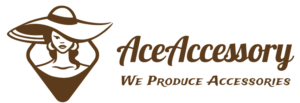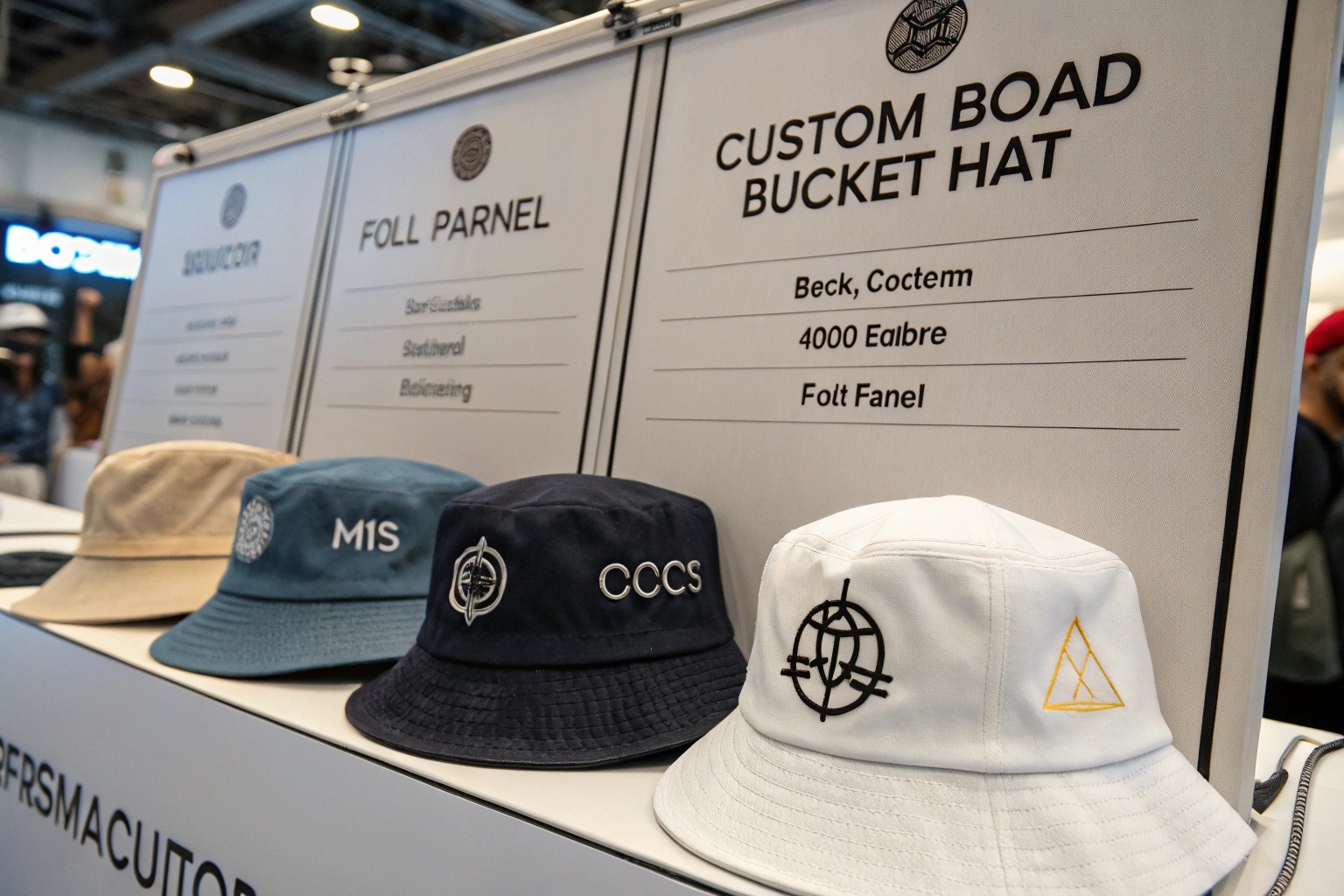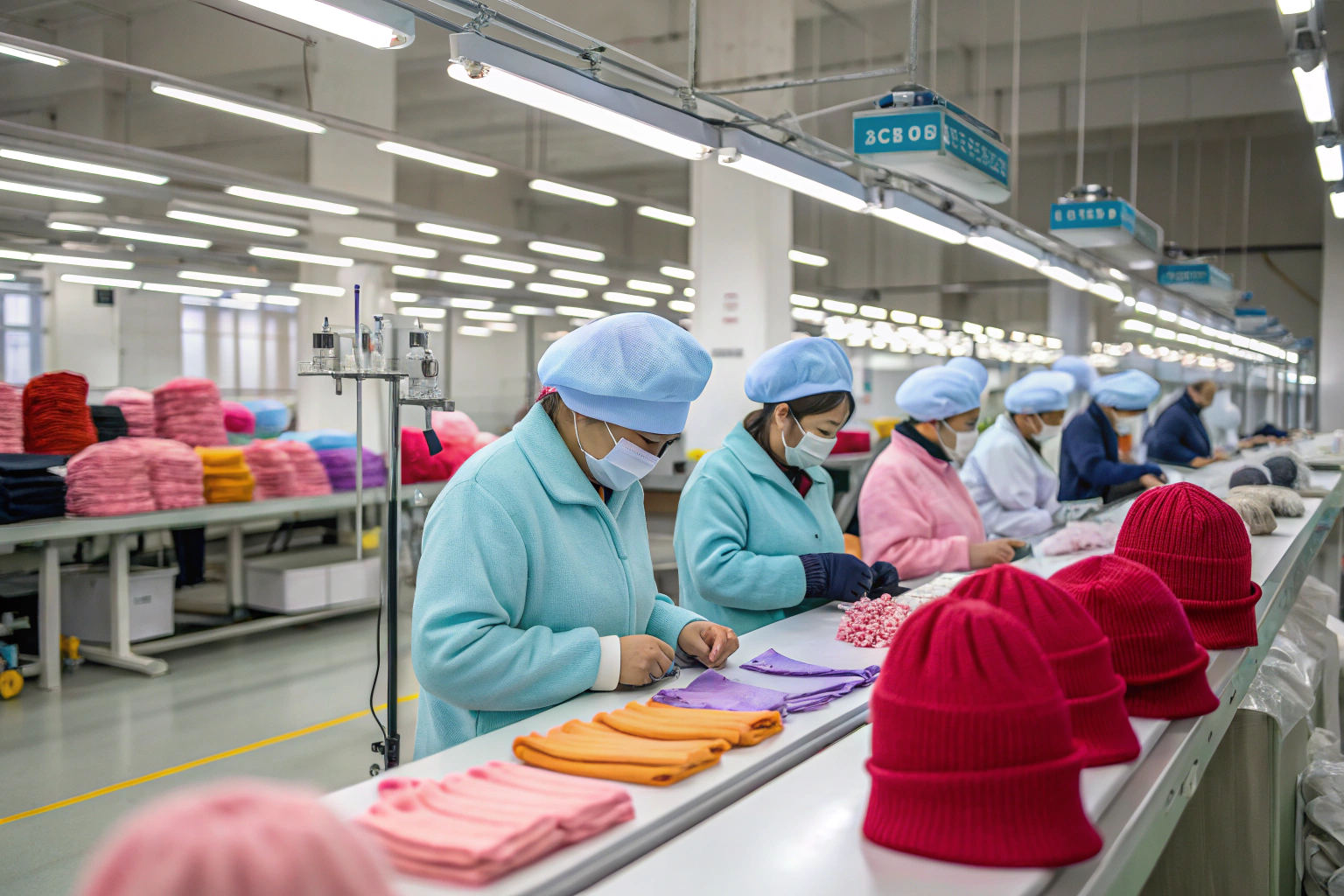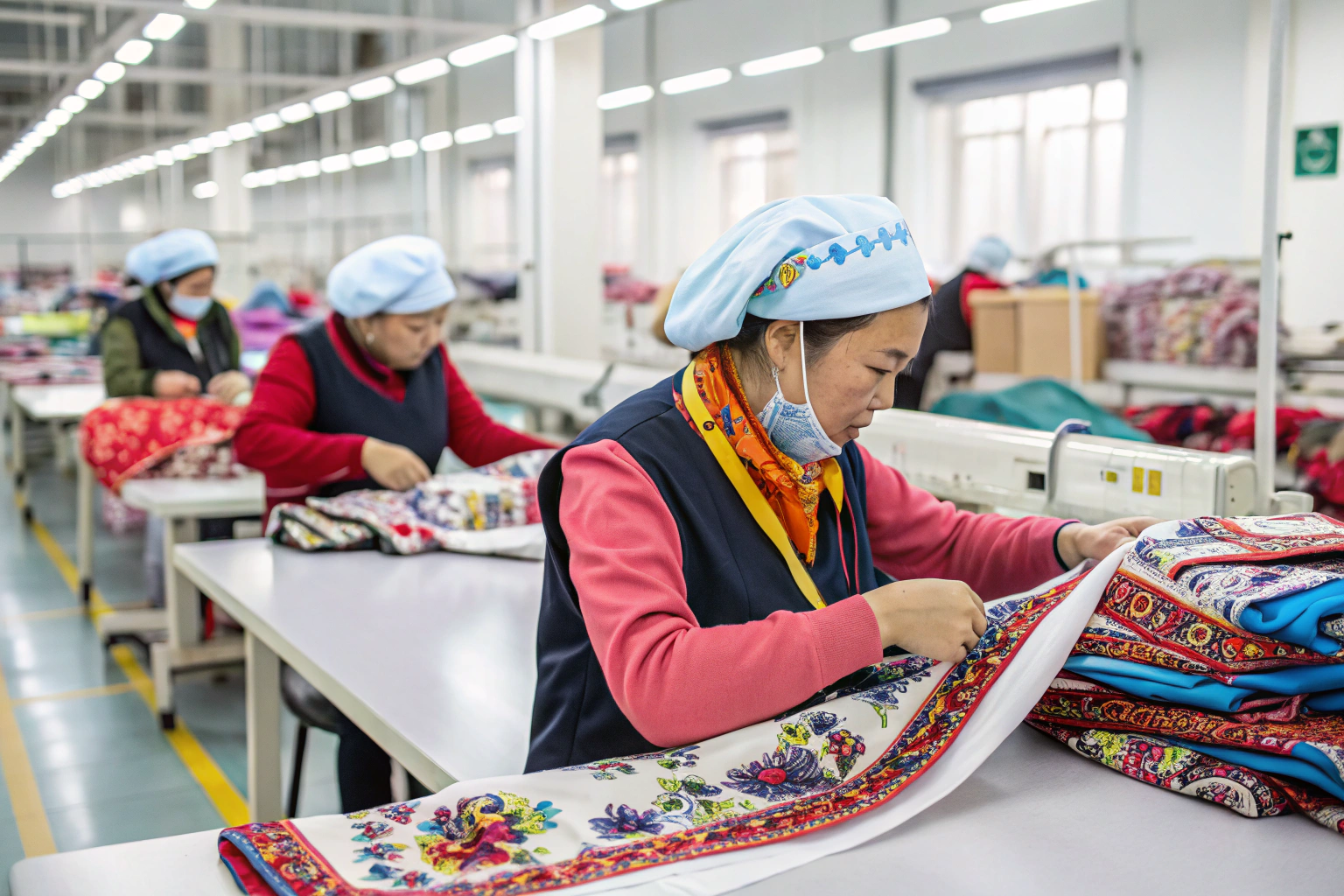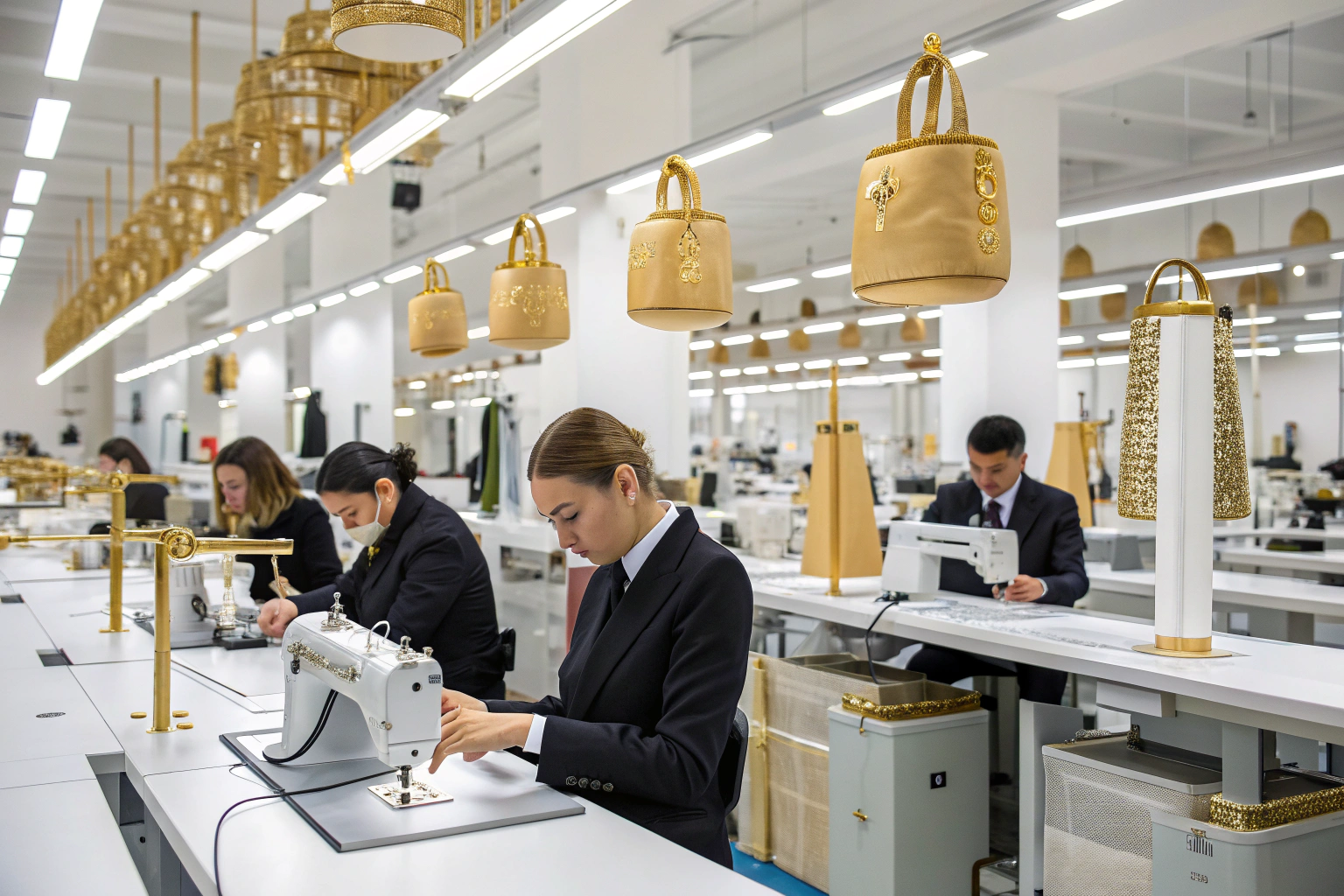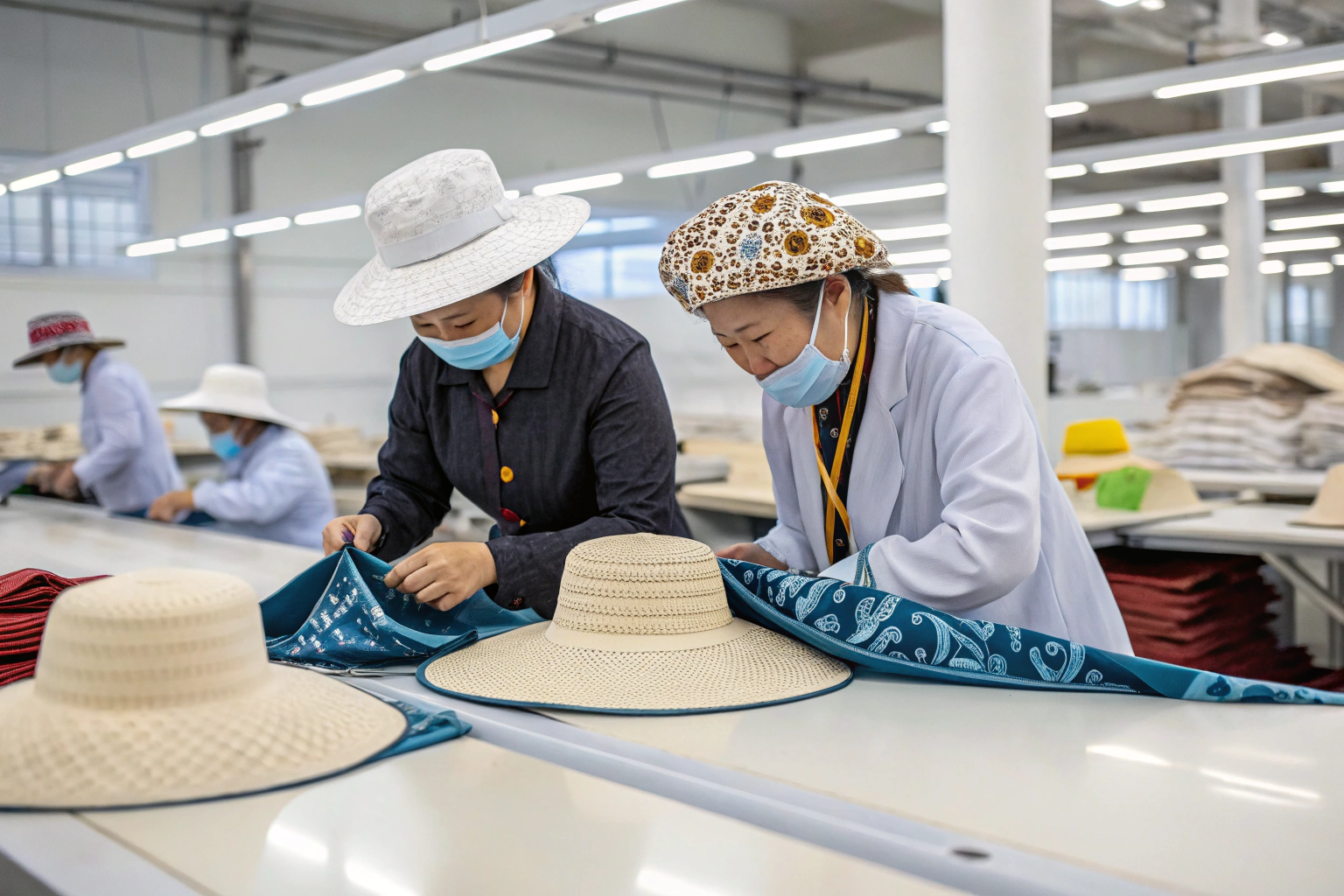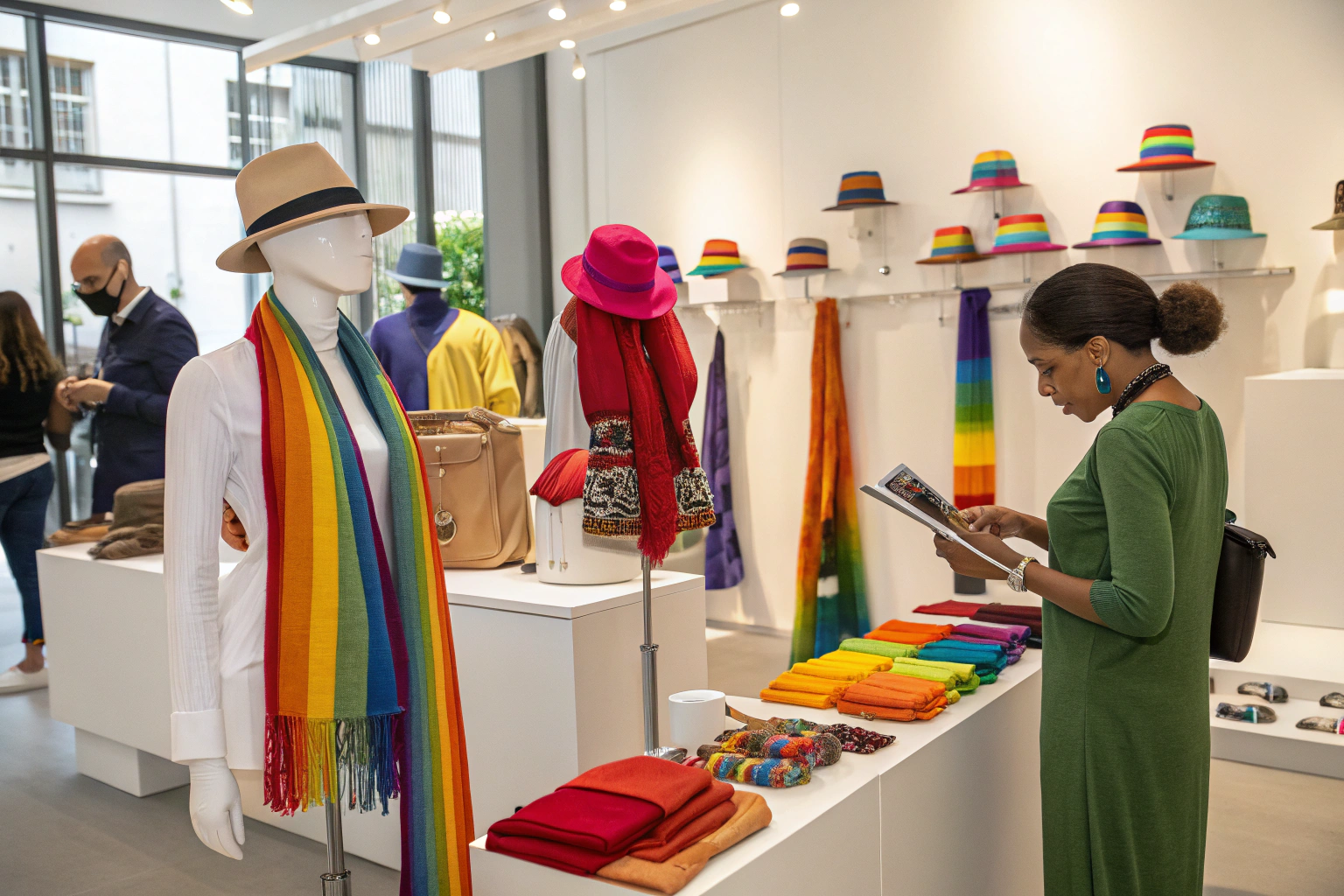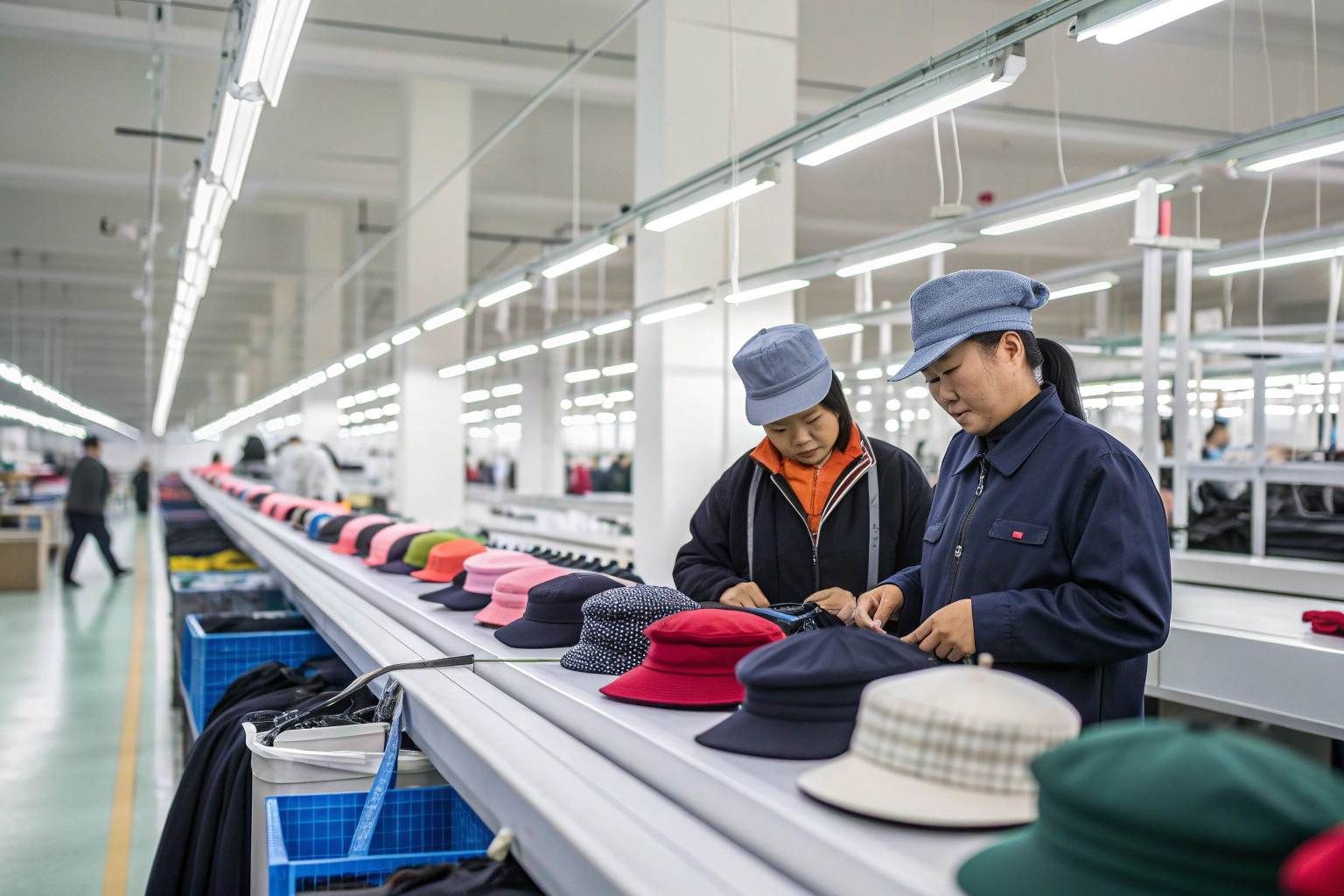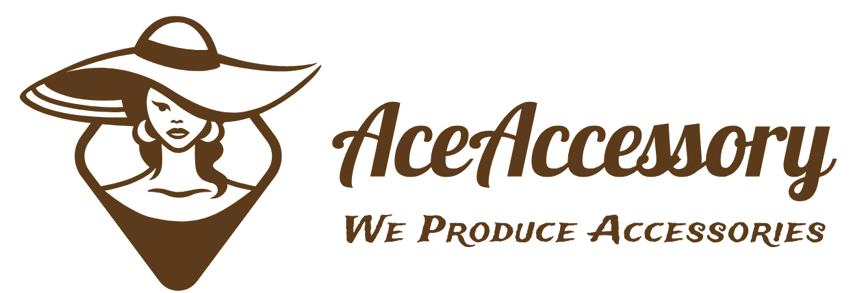Not every buyer needs 10,000 units. For streetwear brands, event merch, or small retailers, even 100 bucket hats with custom branding can make a big impact. But finding Chinese manufacturers willing to support that scale? That’s where things get tricky—unless you know what to ask for.
MOQ (Minimum Order Quantity) options for custom bucket hats in China vary from 100 to 1000 pieces per style, depending on customization level, fabric availability, and factory capacity. Smart negotiation and material choice can help reduce these numbers.
At AceAccessory, we specialize in supporting small-to-medium hat buyers, helping them scale with realistic volumes and full-brand flexibility. Here's what you need to know.
Typical MOQ Ranges for Bucket Hat Manufacturers
MOQ is often the first dealbreaker for new hat buyers. But the number isn’t fixed—it depends on the factory and the request. Understanding baseline expectations helps you choose the right partner.
Most bucket hat manufacturers in China set MOQs between 300–500 pcs per color or design for full custom orders. For semi-custom orders, MOQs can drop to 100–200 pcs if using in-stock fabrics and standard shapes.
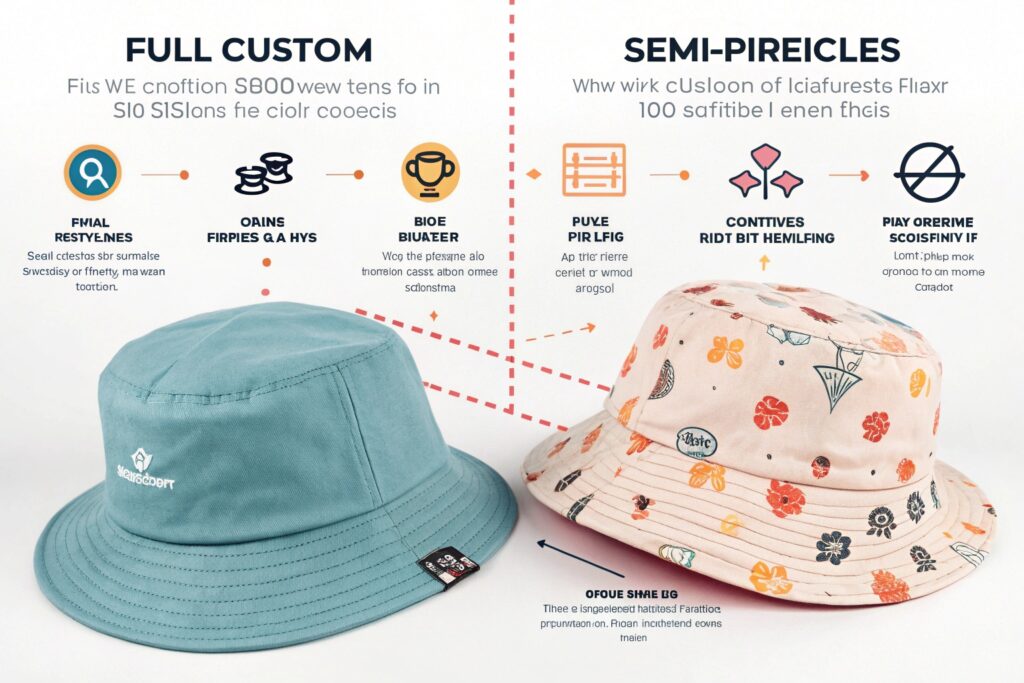
Common MOQ Scenarios
| Order Type | Typical MOQ (pcs) | Notes |
|---|---|---|
| Full Custom (new fabric, embroidery) | 500–1000 | Includes dyeing, pattern, new mold setup |
| Semi-Custom (stock fabric, custom logo) | 200–300 | Shared fabric with custom patch/print |
| Stock Hat with Logo | 100–200 | Fastest turnaround, cheapest option |
At AceAccessory, we support MOQs as low as 100 pcs/style for clients using our pre-approved fabric inventory and standard size molds.
This helps brands test markets or release limited collections without overcommitting inventory or budget.
Factors That Influence Hat MOQ Requirements
MOQs aren’t just factory preferences—they’re tied to real production costs. Knowing what drives these numbers can help you choose cost-efficient solutions or negotiate smarter.
MOQ requirements for bucket hats depend on factors like fabric sourcing method, type of logo customization, lining complexity, and whether custom molds are needed for brim shaping.
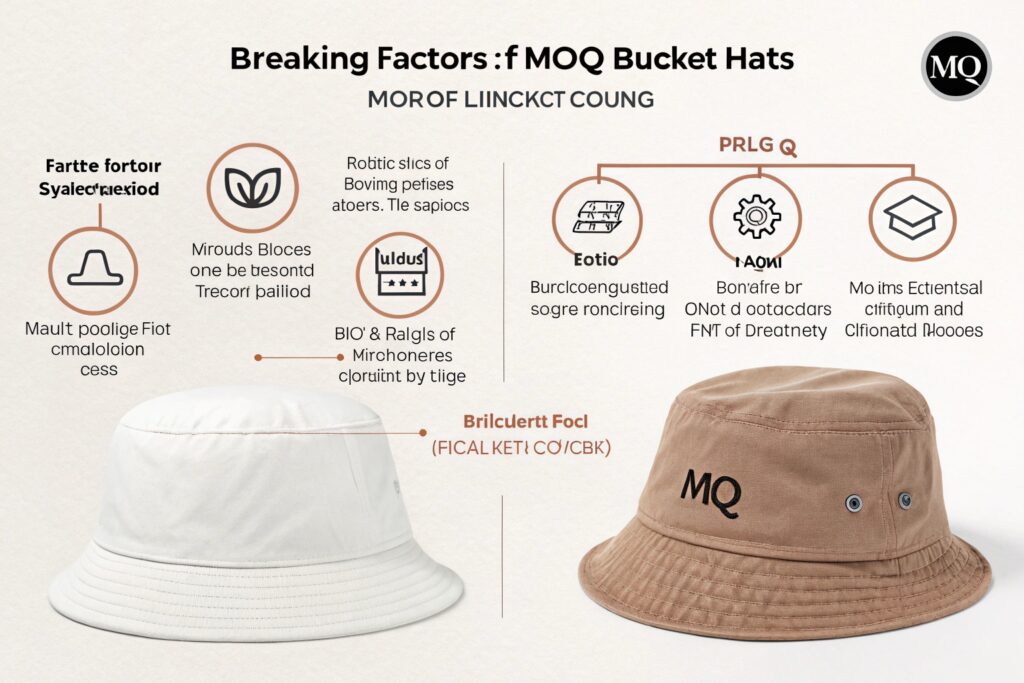
Key MOQ Influencing Factors
| Factor | Impact on MOQ |
|---|---|
| Fabric Source | Custom-dyed fabric requires higher MOQs |
| Print vs. Embroidery | Embroidery has machine setup cost, higher MOQ |
| Logo Size & Placement | Multiple placements = more stitching time |
| Hat Construction | Complex panels or lining = more labor |
| Season | Off-season orders often require higher MOQ |
For example:
- A reversible hat with full-panel printing might need 500+ units to be cost-effective.
- A solid color canvas bucket hat with a small 1-color print can be produced at 200 units or less.
AceAccessory offers MOQ consulting for each order type, helping clients choose specs that hit their branding goals while staying within volume targets.
How to Negotiate Lower MOQs for Custom Orders?
The art of negotiation starts with understanding your value to the supplier. It’s not always about price—it’s about reliability, long-term potential, and production simplicity.
To negotiate lower MOQs, simplify custom requirements, agree on flexible timelines, share material with other SKUs, or offer batch orders over several months.
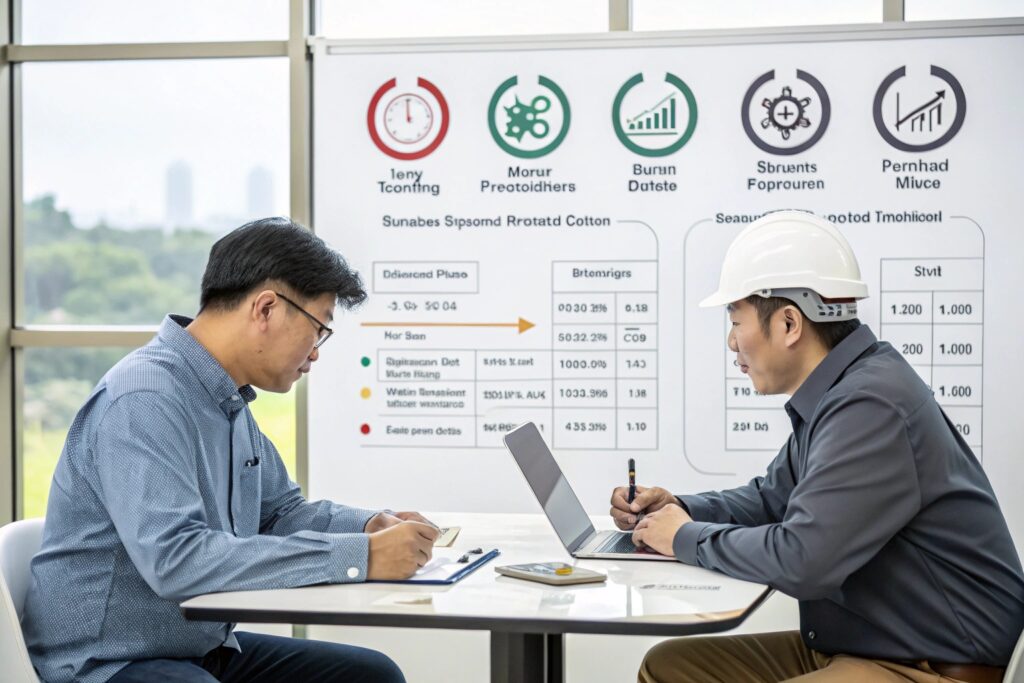
Tactics for Effective MOQ Negotiation
| Strategy | Explanation |
|---|---|
| Use In-Stock Fabrics | Avoid custom dyeing, which raises MOQ |
| Stick to Standard Sizing | Avoid new molds or patterns |
| Choose One Logo Method Only | Avoid mixing print, patch, and embroidery |
| Offer Long-Term Order Agreement | Factories like stable clients |
| Share Fabric Across Styles | Combine orders to meet fabric MOQ |
AceAccessory allows you to:
- Split MOQ across colorways (e.g., 150 white + 150 black = 300 pcs)
- Use leftover trims or panels from other clients
- Batch repeat orders quarterly to keep unit costs low
We even offer “hat labs” for startup brands—low-MOQ prototyping with feedback-based sampling and crowdfunding delivery options.
MOQ Differences for Printing, Embroidery, and Fabrics
Not all customization methods are treated equally by factories. Each process has its own machine setup, labor steps, and material waste, which all affect MOQ.
Screen printing, embroidery, and fabric selection each carry different MOQ thresholds. Embroidery and digital printing generally require higher order volumes than basic screen print or heat transfer.
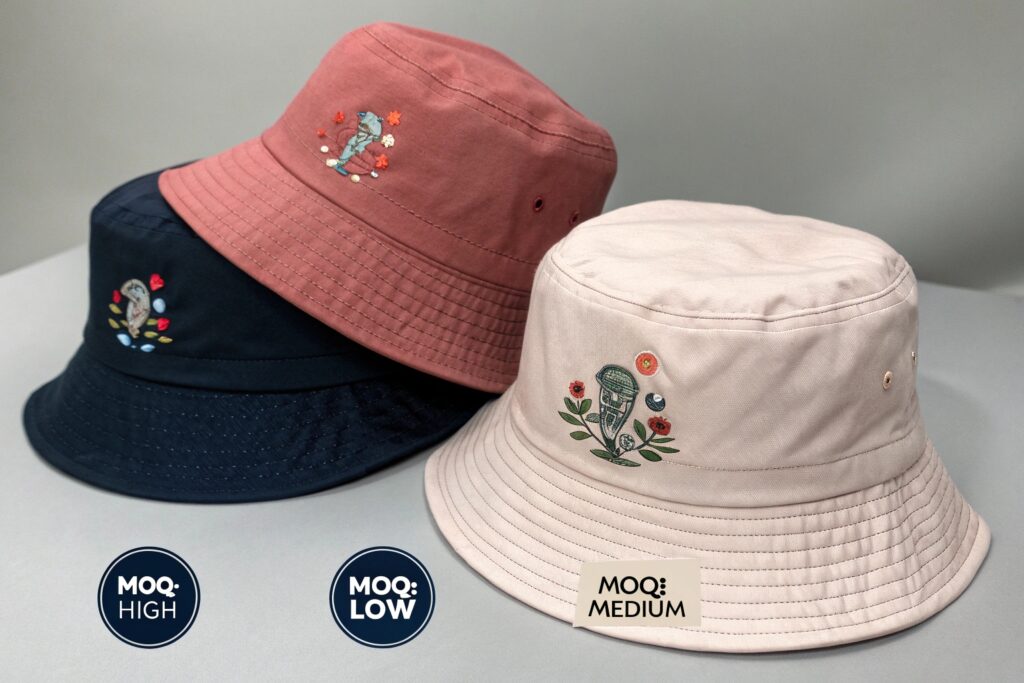
Comparison of Customization Techniques and MOQ
| Method | MOQ Range | Cost Notes |
|---|---|---|
| Screen Print | 100–200 | Low cost, simple to set up |
| Heat Transfer | 100–300 | Good for gradient logos |
| Digital Print (DTG) | 200–400 | More setup, better color coverage |
| Embroidery (Flat) | 300–500 | High perceived value, high stitch time |
| Puff Embroidery | 500–800 | Complex, requires machine tuning |
Fabric Selection Impact
| Fabric Type | MOQ Impact |
|---|---|
| In-Stock Canvas | Lowest MOQ, easy to match |
| Custom-Dyed Cotton | MOQ 500–1000 due to dye bath minimums |
| Sublimation-Ready Poly | Higher MOQ, print-specific fabric |
We guide our clients to match design with feasible process. For example:
- Use heat transfer on cotton canvas for startup merch
- Try flat embroidery on brushed twill for mid-tier launches
- Reserve puff logos for premium editions or collabs
Conclusion
MOQ doesn’t have to limit your brand. With the right approach and a flexible factory partner, you can source custom bucket hats from China starting at 100 pieces per style. At AceAccessory, we help you launch smarter—with materials, methods, and volumes that match your stage of growth.
